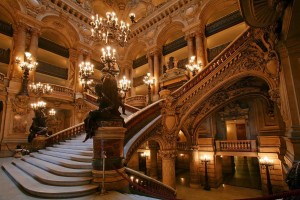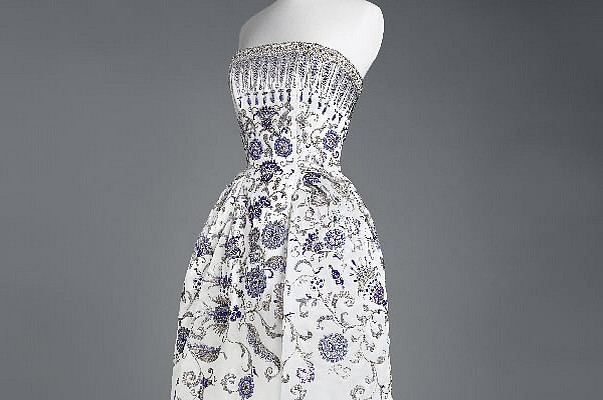Fuse Feature: A Letter From Paris, City of the Arts
A two week stay in Paris, April 11 through 26, delivered the sights and sounds crooned about in the well-known songs.
By Iris Fanger.
If there’s a turn towards austerity in France, you wouldn’t know it from the life in the streets of Paris this past month. The restaurants were packed, not necessarily with tourists; there were long lines to enter the museums and the monuments—a ride up the elevator to the top of the Eiffel Tower, forget it!—and traffic jams of ominous size and duration. The only way we could visit Notre Dame, without the many tour groups blocking the way through the side aisles of the cathedral, was to arrive one morning before 8:30 a.m. when we watched the sacristans dusting the altars in each of the ancient side chapels and peeked in through a grate at the red-robed priest saying Mass in the Choir. Entrance to the morning Mass was by reservation only.
The mother of all traffic tangles occurred one mid-afternoon at Place de l’Opera. Palais Garnier, the Paris Opera House, stands amid the confluence of four streets and an avenue, a monumental French version of a round-about. Each intersection of the circle was blocked by a cat’s-cradle of cars, trucks and tour buses, all of them trying for an extra inch through the morass, and not a flic in sight. For all I know, the vehicles are there yet. Otherwise, the Metro is still the only way to travel through Paris, except for walking, which remains the best solution.
A two week stay in Paris, April 11 through 26, delivered the sights and sounds crooned about in the well-known songs. When the sun finally came out after four days of rain and chill, lovers holding hands emerged, while others took to the banks of the Seine—Paris plage as bankside is called in warm weather—to enjoy the views. If you were a vrai Parisienne, you were wearing stove-pole legged jeans; a tiny jacket, preferably black leather; boots up to your knees over the jeans and a long, patterned scarf tied around your neck and shoulders. Not only were the lithe young women in the costume, but others of every age and size. (You see fewer overweight people in Paris, despite the ubiquitous and wonderful presence of boulangeries and patisseries). When the temperature went up, the boots were replaced by little ballet flats.
We spent our first night in the City of Light seated on tiny, wooden chairs in the Church of Saint-Germain des Pres, at a performance of Handel’s Messiah, sung by a choir of nearly 100 voices, including a children’s chorus and soloists, plus an orchestra. The work was written (and performed) in English because Handel was living in London when he composed it. We had arrived that morning, allowed ourselves two hours of sleep, and dined at Les Deux Magots, the famed literary haunt of Rimbaud and Hemingway, de Beauvoir, and Sartre, before attending the concert. The chanting repetitions of the “Hallelujah” chorus, rising full throated to the rafters of the old church, remained in our ears long after the evening had ended.
Paris calls itself Cite des Artes, with good reason. We spent part of each day at a museum, a monument, or performance, but barely made a dent in the calendar of events and special exhibitions. Tout Paris was talking about two exhibitions in particular: the nineteenth-century artist, Eugene Boudin, au fil des voyages, through July 22 at Musee Jacquemart-Andre on blvd Haussmann in the 8th; and the swanky, elegant display of fashion, Paris Haute Couture, through July 6 at Hotel de Ville. Paris does so many things right: food, the Metro, and mounting special exhibitions that become news, must-sees for the masses. We also attended the Marie Laurencin exhibit, through June 30 at Musee Marmottan Monet in the 16th; the sweeping special display, Napoleon et l’Europe at Hotel des Invalides; and an exhibition of Art Noveau objects that included a grouping of images of Sarah Bernhardt and a film of the American dancer, Loie Fuller, c. 1905, at the Pinacotheque de Paris, through September 8 on the Place Madeleine (before lunch at Fauchon’s nearby).
One highlight of the stay was an evening at Palais Garnier for the Spectacle de Ballet de L’Opera/ L’Ecole de Danse on the occasion of the 300th anniversary of the school. The senior students, and some younger ones, presented an evening of four works: D’Ores Et Deja, choreographed by Beatrice Massin and Nicolas Paul to music by Rameau; Le Nuit De Walpurgis (from the opera Faust), staged by Claude Bessy après Leo Staats to music by Charles Gounod; Auni, choreographed by Jacques Garnier for three charming, young men in antics reminiscent of Charlie Chaplin, performed to accordion music by Maurice Pacher; and Peches De Jeunesse, choreographed by Jean-Guillaume Bart to music by Gioacchino Rossini. The School of the Paris Opera Ballet consistently turns out highly skilled technicians trained in the same style, which gives a cohesive look to the company. The youth of the performers added to the charm of the evening, not to mention the grandeur of the Opera House interior, all red velvet and gold, crystal chandeliers hanging above, and the splendid Chagall mural overhead beneath the dome.

A picture by the nineteenth century artist Eugene Boudin — an exhibition of his paintings is one of the must-see events in Paris.
We chose to stay in apartments rather than a hotel, which gave us an opportunity to imbed ourselves into two different neighborhoods: first in the 7th, near enough to Les Invalides to see the gold, lighted dome from our windows at night. For the last few days, we rented a small apartment on the Ile Saint-Louis, above the best boulangerie/patisserie we’d ever had the luck to find. Residents for the moment, we set about to find the closest food stores, the local pressing or dry cleaner, the tobac for the newspaper, and the near-by Metro stops. Paris is pricier than I remembered, not only for the fancy clothing labels but for the goods in the super-marches. The only people carrying large shopping bags from the Rue St. Honore boutiques were the Japanese and Chinese tourists.
Each night there was a different sort of theater on the streets around the National Assembly. A crowd protesting the imminent passage of a law to legalize same-sex marriage staged a demonstration, called by the French une manifestation, which turned violent at times. A parade of dozens of police cars closed the streets around the National Assembly building and beyond to Les Invalides. The people who opposed the bill with whom we spoke seemed more concerned about gay male couples wanting to adopt children than allowing them the right to marry. The bill passed into law last week.
We monitored the terrible events in Boston from afar, by e-mails from friends but also in the French press and on the local television channels. The issues of immigration and assimilation by people from beyond the national borders rubbed raw a similar fear in the French. A visitor hanging around the monuments centre ville is little aware of the multi-racial presence in France, but as soon as the Metro trains near the suburbs, the faces in the subway cars change from all-white Gallic to a global representation.


